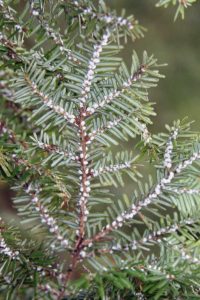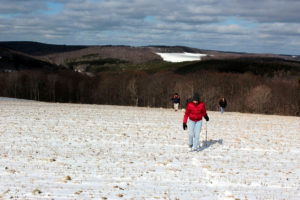 For the last hike in February we were greeted with a light snow cover across the landscape. Thirteen hikers came out for a 30 degree hike, which followed last weekend’s 70° hikes. Fortunately, we had a number of hills to climb, which kept us warm.
For the last hike in February we were greeted with a light snow cover across the landscape. Thirteen hikers came out for a 30 degree hike, which followed last weekend’s 70° hikes. Fortunately, we had a number of hills to climb, which kept us warm.
After an hour hiking through the woods protected from the wind, the Climbers made it to the potato fields at the tops of the hills for views in all directions. The wind definitely picked up in the open field, but the sun was out and as many times as I have seen this view, I still enjoy it.
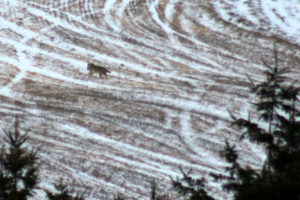 Douglas was taking pictures and noticed two coyotes crossing the field to the north. Making sure that Duffy stayed close by, we headed across the field and found the tracks first headed west, and then headed back east to the woods, after several shots from a hunter. Duffy sniffed and barked at the footprints, but decided not to follow the tracks.
Douglas was taking pictures and noticed two coyotes crossing the field to the north. Making sure that Duffy stayed close by, we headed across the field and found the tracks first headed west, and then headed back east to the woods, after several shots from a hunter. Duffy sniffed and barked at the footprints, but decided not to follow the tracks.
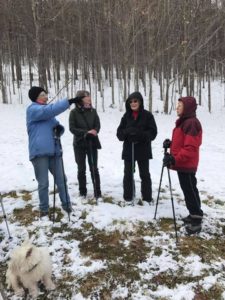 Meanwhile, the Tourtalists (Pati’s new name for the Naturalist/Tourist combo group) walked south along the valley to the old ski hill, where the climbers met them before heading up to the top.
Meanwhile, the Tourtalists (Pati’s new name for the Naturalist/Tourist combo group) walked south along the valley to the old ski hill, where the climbers met them before heading up to the top.
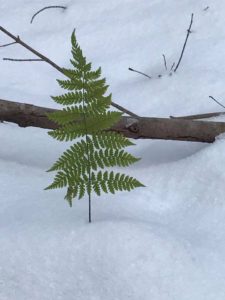 On the return hike, Linda led the Tourtalists along the woods and across the rock bridge to our upper field. Pati found a brave fern standing tall above the snow, for a beautiful image of the hike.
On the return hike, Linda led the Tourtalists along the woods and across the rock bridge to our upper field. Pati found a brave fern standing tall above the snow, for a beautiful image of the hike.
Following the hike, everyone enjoyed deviled eggs, goat cheese with pulled pork sandwiches and potatoes. And, as is our tradition, we had fruit and cakes for desert – many hikers splurged and had helpings of each of the deserts![envira-gallery id=”255460″]

